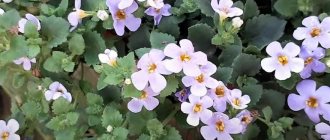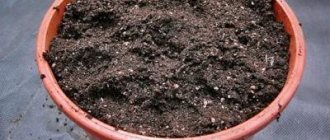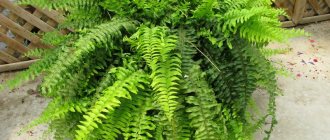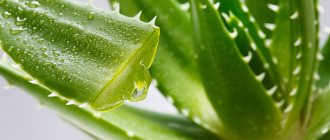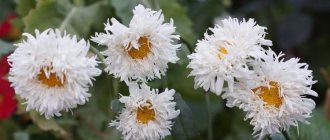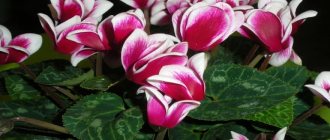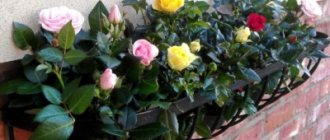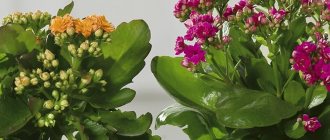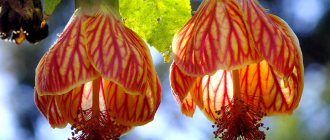The original house plant Columnaea is distinguished by short fluffy shoots that hang down. They are covered with smooth leaves of various shapes. The plant is also known for the appearance of its flowers. under the second name - goldfish.
Columnea, the photo of which is presented below, belongs to ampelous flowers, that is, suitable for growing in hanging pots due to their hanging stems.
The flower is formed in the axils of the leaves in the central zone of the shoots and is presented in the form of long tubes with 1 row of petals along the edge.
Care does not cause much concern, but requires knowledge of the necessary conditions of detention.
Description of the plant
Columnea is a hanging plant from the Gesneriaceae family, growing in tropical areas of America.
The stems are flexible, their length can reach 2 m. The leaves are fleshy, small, up to 4 cm long, hard, elongated-oval, located opposite on the stem.
Columna flowers can be yellow, orange, red, or less often pink
The two upper petals of the flower are connected and form the so-called hood. The fruits are white, spherical in shape.
Of the well-known domestic plants, relatives of Columna are Kaleria and Gloxinia. Columna is sometimes called the “indoor orchid”, however, they have no relationship with the orchid.
Columnea looks especially impressive in hanging pots and flowerpots.
What does it look like
Columna has flexible, pubescent shoots that hang down. They grow smooth, dark green leaves. This plant is grown in hanging pots so that the branches hang down. Flowers grow from the axils of the leaves. They have a tubular structure. The petals in the buds are arranged in one row.
With proper care, the flower will delight you with abundant blooms
For your information! There are differences between columnea and aeschynanthus, which lie in the nature of flowering. The latter has buds located at the ends of the shoots, while the former has buds along the entire stem. Otherwise, these plants are very similar to each other.
Types of columna
The following types of columna are distinguished:
- Columnea Consanguina is a shrubby plant with a brown, hairy stem that grows up to 1.5 m. The leaves are arranged in pairs, but one leaf is always smaller than the other, so the leaves appear to be arranged alternately. The flowers are pale yellow.
- Columnia krakatoa is an epiphyte (a plant that requires support - another plant, for example). One of the most common among gardeners, it is often used to decorate a home or office. The flowers are very bright, the leaves completely cover the trunk.
- Carnival. Valued for its numerous flowers, the bright yellow petals of which have a noticeable red border. The plant is small and can bloom for a whole year.
- Columnea red is distinguished by creeping thick shoots and lanceolate leaves.
- Columnae Banks. It is unpretentious in care, so it is also widespread. The stems droop and branch heavily. The leaves are green on top and red on the underside. Flowers are up to 6 cm long, red-orange with a yellow throat.
- Glorious and small-leaved are plants with pubescent leaves. Their flowers are similar in shape and color, however, the leaves of the glorious Columna are about 8 cm, and the leaves of the small-leaved plant are only 1 cm.
- Columna thickifolia is distinguished by erect shoots.
- Columnia cusis is a hanging plant whose dark green leaves appear to be carved out of leather.
- Other types of columna are found less frequently in decorative floriculture. These are Columna vedrare, Columna Morton, Columna acute, Columna Allen.
Photo gallery: different types of columna
Red columnar has hard lanceolate leaves
Yellow and orange flowers distinguish Columna Banks
Columna gloriousa has pubescent leaves
Small leaves give the name to this type of columna
Krakatoa is often used to decorate a home or office.
Flowers are distinguished by a red border around the edge of the petals
Table: conditions by season
| Temperature | Lighting | Humidity | |
| Spring Summer | 18–20 оС | Bright diffused sunlight. East or west windows. | Systematic spraying, more frequent in the summer heat. |
| Autumn winter | During the dormant period (begins at the end of autumn), which lasts about 50 days, it is necessary to ensure a temperature of 10–12 °C. Then the flower is moved to a warmer place. | Bright diffused sunlight. South windows. | Do not spray during the dormant period. |
Planting and transplanting
Columna can be replanted immediately after flowering. You need to take a wide and shallow pot. Variant of soil mixture (the main requirement is the absence of lime): equal parts of turf and leaf soil, 1/2 part of peat, charcoal, sand and chopped sphagnum moss - 1/4 part. Columnia will also grow well in purchased universal soil.
Before transplanting, the columna shoots are cut in half.
Replanting, as a rule, is required once every 2 years, when the roots of the plant have entwined the earthen ball. There is no need to clean off the old soil; carefully remove the column, place it together with the soil in a new pot, and sprinkle it with fresh substrate.
When planting columnea in a pot there must be drainage
Bloom
As you can see from our article, caring for Columna is not very difficult. If you do everything correctly, the plant will definitely delight you with a bright carnival of flowers. Often gardeners achieve flowering of the plant 2 times a year.
If the southern guest does not want to do this, try this method: limit watering for a while and move the flowerpot to a cool room.
Care
Proper watering and timely fertilizing, as well as the necessary conditions during flowering and dormancy, will help the plant feel good throughout the year.
Watering
The flower will not like water containing lime at all. He will “tell” about it with drying leaves. Therefore, be sure to use filtered water. In addition, its temperature must be at least 20 ° C. The soil should dry out a little between waterings. Moisture stagnation should not be allowed.
In winter, watering is moderate, and in summer quite frequent.
In summer, the column needs to be watered frequently with filtered warm water.
Top dressing
Columnia especially needs feeding when flower buds appear (usually the end of winter). For fertilizer, you can use store-bought mixtures for indoor plants, but you only need to take half as much as indicated in the instructions. Feed the columnar plant once every 7–10 days until the beginning of October.
Fertilizer for flowering columna is sold in stores
Flowering period
Columnia begins to bloom in the spring, but only under favorable conditions. If flowering does not occur, then you can try the following: slightly limit watering and lower the temperature. Such measures should stimulate the appearance of flowers. Columna may also “refuse” to bloom due to too dry air.
A healthy columna blooms profusely all summer long.
Indoor Decembrist is the easiest to care for, but blooms no less beautifully:
Rest period
In autumn, flower buds are laid for the next season. At this time, the temperature of the room where the columna grows should be reduced to 10–12 °C. After 45–50 days, the plant will develop buds measuring 0.5 cm in size - this is a sign that you need to move the plant to a warmer place (16–18 °C).
The dormant period is an important stage in the life of a plant; it should not be neglected. If the wintering period is not maintained or even shortened, the columnar plant may remain without flowers in spring and summer.
Recent Entries
Lilac perennials that are beautiful, compact and do not crowd out other plants Why when buying seedlings you should not take the sellers’ word for it and how to determine the age of the plant using 3 signs Tomato seedlings have turned purple or whitish: why the color has changed and how to save the plants
During the dormant period, the column needs to be kept at a cool temperature.
Plant Formation
Columnea is a fast-growing plant. Over the course of a year, its shoots can grow up to 50 cm. Often the stems lose their attractive appearance because they become bare (this can happen due to unfavorable conditions or errors in care). Therefore, every year after flowering, it is recommended to rejuvenate the plant - cut off some of the shoots, root some of them to get new columna bushes. Pruning a plant, in addition to aesthetic purposes, has another important meaning - stimulating the next flowering.
Care errors
The columnist may not like some conditions, and she will react to this with appropriate symptoms. Diseases and pests are practically not dangerous for this plant, especially with proper care, but the plant can be attacked by the omnivorous spider mite.
To combat spider mites, it is recommended to treat the columnar plant with special means in the fall.
Table: care errors and how to fix them
| What's happened | Because of which | Exit |
| The leaves dry out and fall off | Insufficient humidity | Spray more often. |
| Leaves turn pale and become spotted | Leaves exposed to direct sunlight | Hide from direct sunlight. |
| Root rot, fungal diseases | Water stagnation due to overwatering | Replant the plant. |
| Brown spots on leaves | Water is too cold when watering | Water for irrigation must be heated to 20 °C. |
| Fuzzy mold | Rot due to too damp environment | Remove the affected parts of the plant, treat with a systemic fungicide, reduce moisture, and periodically ventilate the room. |
| Thin web between leaves. | Spider mite |
|
Diseases, pests
When water stagnates, gray rot may appear on the roots and shoots. It is urgent to remove the diseased areas, treat the cuts with a fungicide and replant the plant. If the disease is advanced, healthy shoots are used as cuttings.
Columna pests can be aphids, scale insects, thrips, and spider mites. To eliminate them, the flower is sprayed with insecticides.
Reproduction of Columna
The optimal time for cuttings from a plant is mid-April.
Instructions for cuttings:
- It is necessary to cut cuttings from the shoots of the plant. Cuttings must be at least 7 cm in length, with 2 leaves.
- Plant in a mixture of peat and sand, cover with a glass jar or polyethylene. You can plant 8–10 pieces in one container, then you will get a lush plant.
- Provide bottom heating at 20–24 °C.
- Water, but do not spray, as this can cause leaf rot. It will take 3-4 weeks for rooting.
- When the cuttings grow a little, plant them in a separate pot.
It will take 3-4 weeks for columna cuttings to root.
It is difficult to propagate Columna by seeds, since you need special greenhouses with a constant air temperature, so cuttings are the best way - fast and reliable.
Gloxinia, a related plant, is propagated in several other ways:
